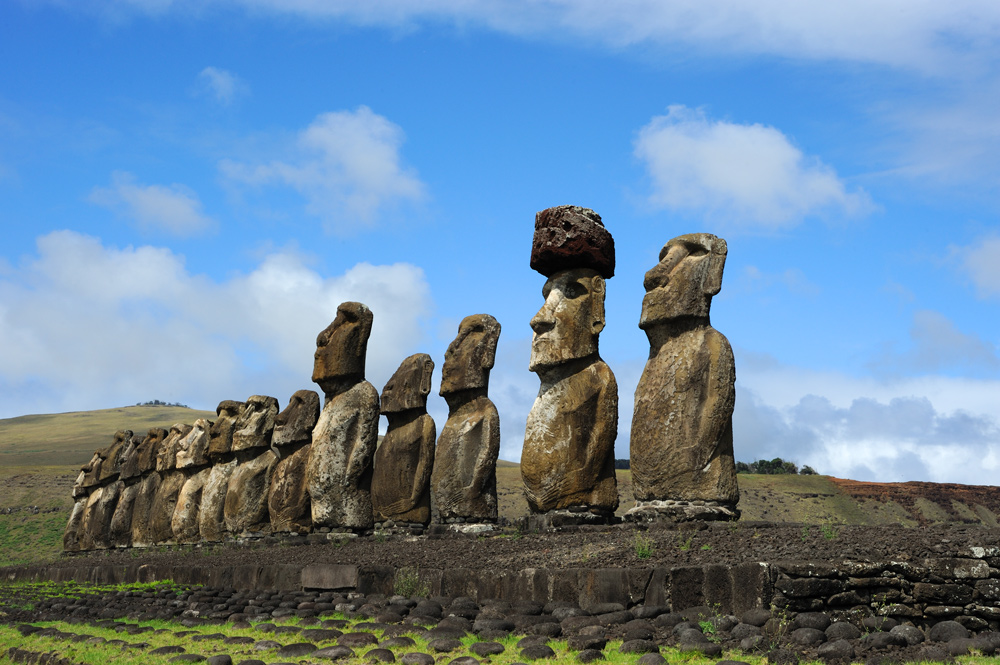
Thus, Hotu-Matu’a people settled on the island. They build huts and small boats for fishing, planted yams and raised hens.
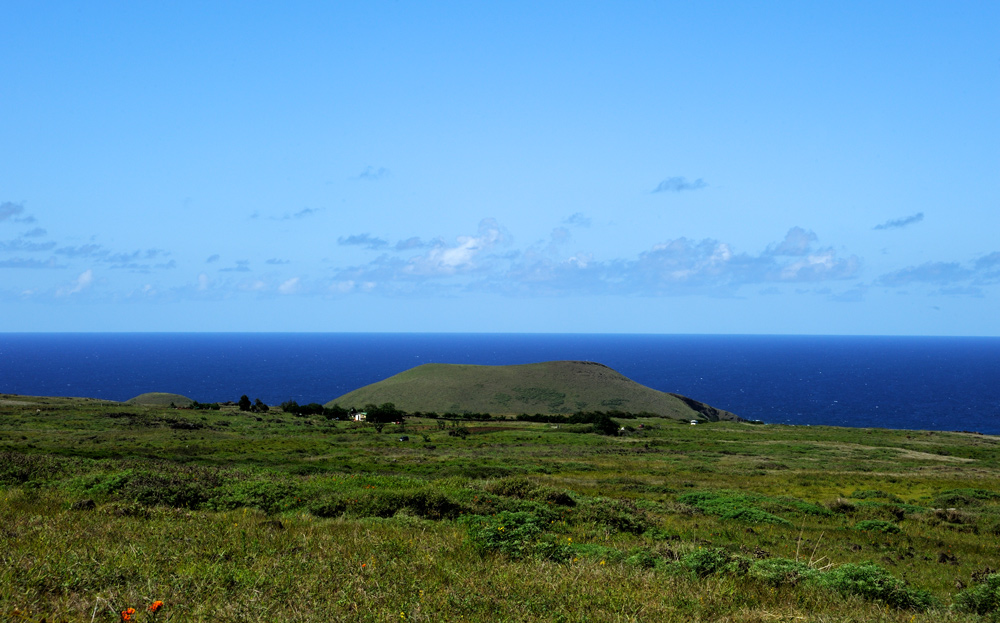
And one day they become boring. The Polynesian economy doesn’t require too much time and afford. Populations of other Polynesian islands had a good time fighting with neighbours from other islands. To build a navy, make a weapon, sail to other islands, all these are required plenty of time. Training in the art of war is also helpful. Celebration of winning takes time and help to develop arts from dances to culinary. And what is most important – it brings aim to the life of society.
Eastern island was the unlucky place, all other islands are so far that can be simply forgotten as useless. The island itself is too small, its population at the beginning was not big enough to divide into two groups and fight. Later islanders successfully did this anyway, but only after they significantly increased the population.
However, a human need to be involved in something more intelligent than hen hunting to feel himself a human, and islanders were captivated with making sculptures. They did it in style. Moai, huge stone statues, is the face of the island, they make the island famous around the world. In some days the alive population of the island was less than the amount of present moai. Nowadays moai give a passive profit to the descendants of the ancient sculptors.
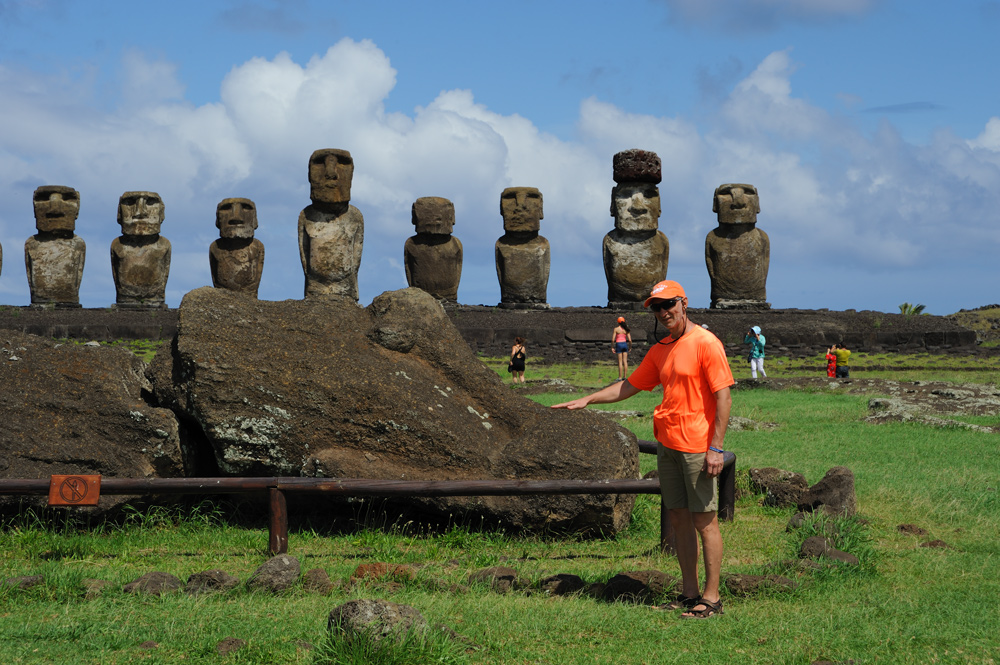
One of the most interesting places on the island is volcano Rano Raraku.
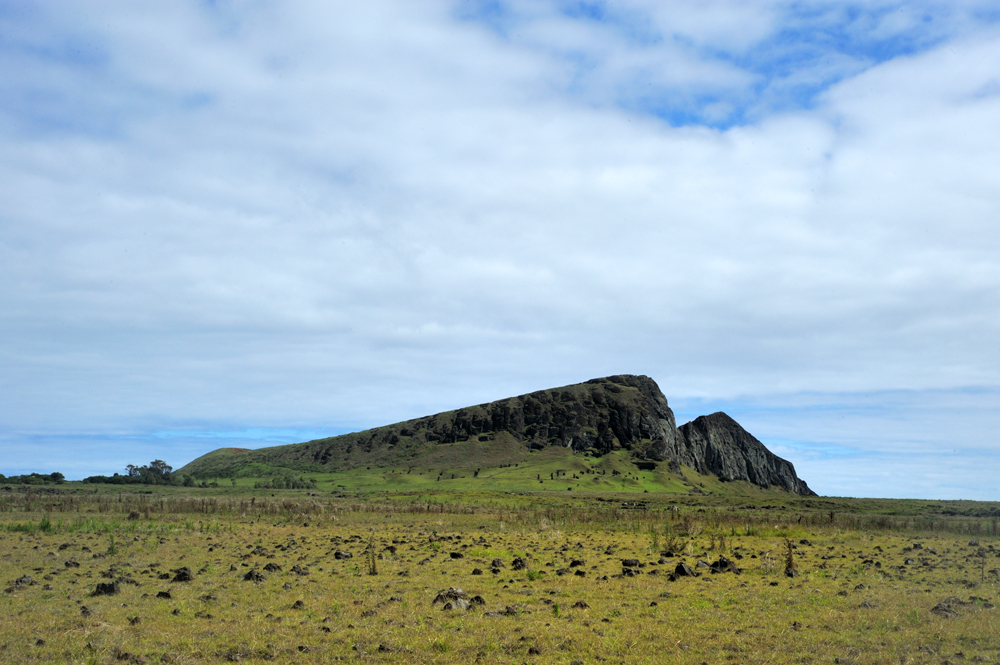
It is old quarry (the islanders used stone not only for making moai) and sculpture studio. Most moai (about thousand of them already found) were made exactly here. The quarry locates of the sea-view side of the volcano.

The main stone of volcano is tuff, and all statues made from it. It is interesting that moai were carved out directly from the rock, i.e. not from an isolated stone block as most sculptors do, but from the body of the mountain. Usually, the sculpture was carved in the position “on the back” till it was connected with the rock only with a thin bridge along the spine. After it was prepared for transportation, and in the last moment the stone bridge was removed. Finally, the moai were transported to their places.
Sometimes sculptors made something wrong, and they left spoiled culture as it is and passed to the new one.
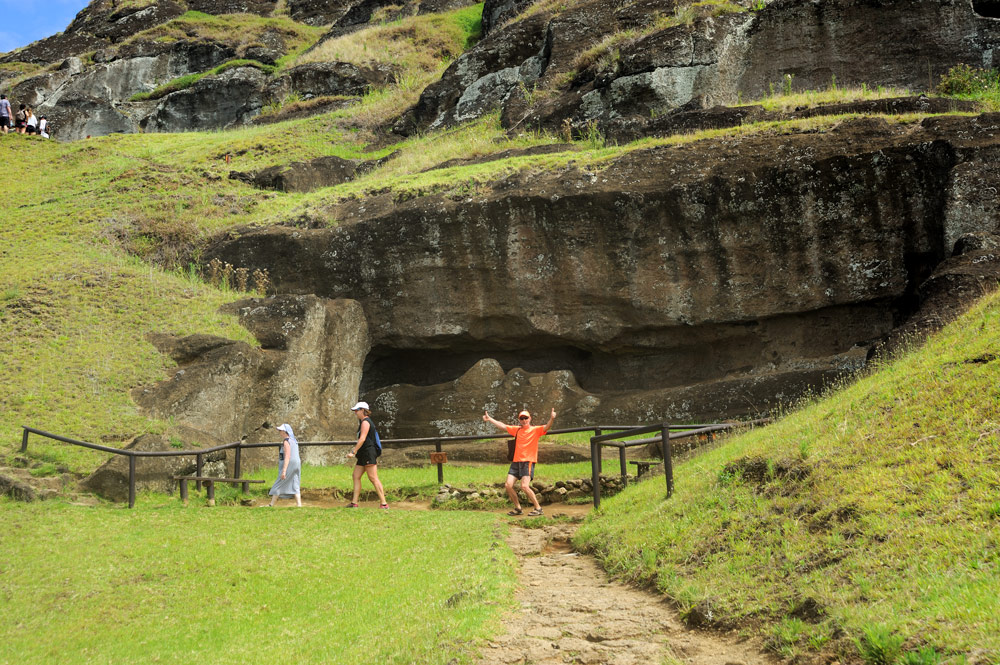
Looks like, the moai carving and the cult connected with them stopped almost in one day, so the volcano slope is covered with sculptures. Some of them just started to be made, other in the process of transportation, and all stages between.
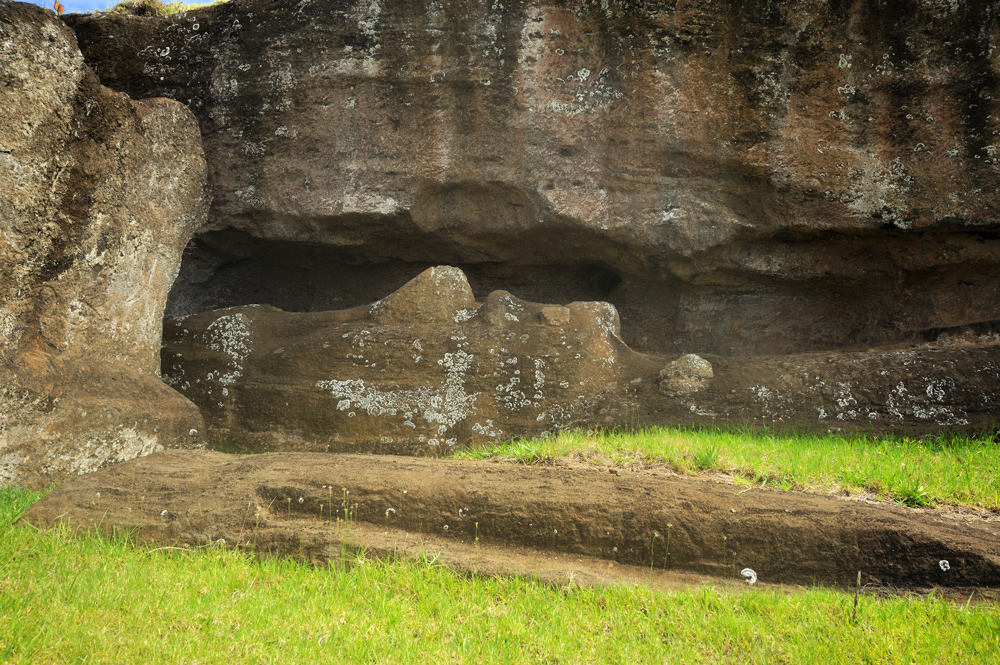
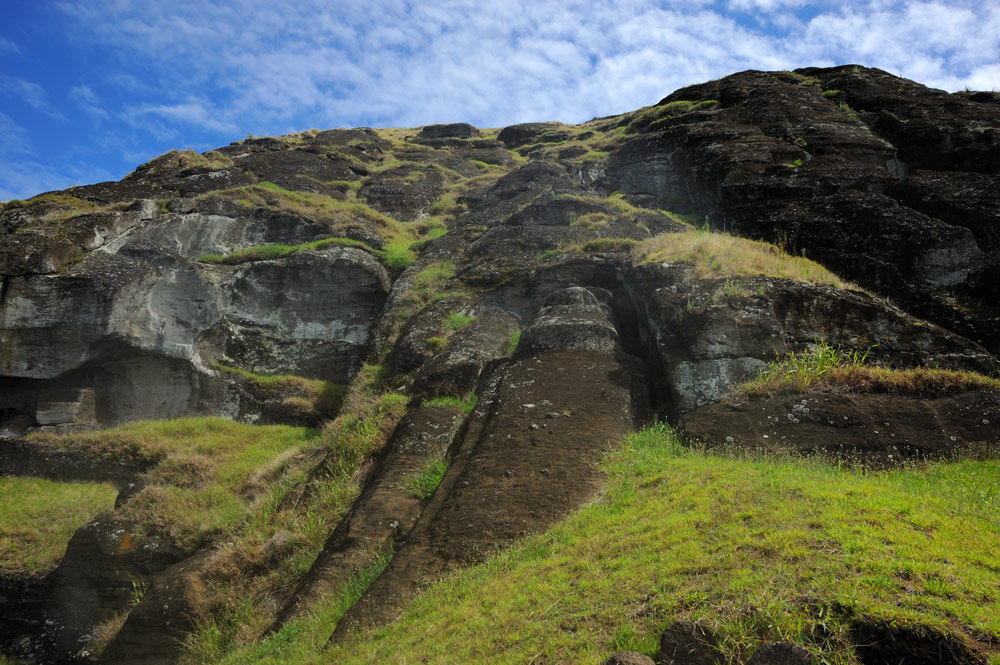

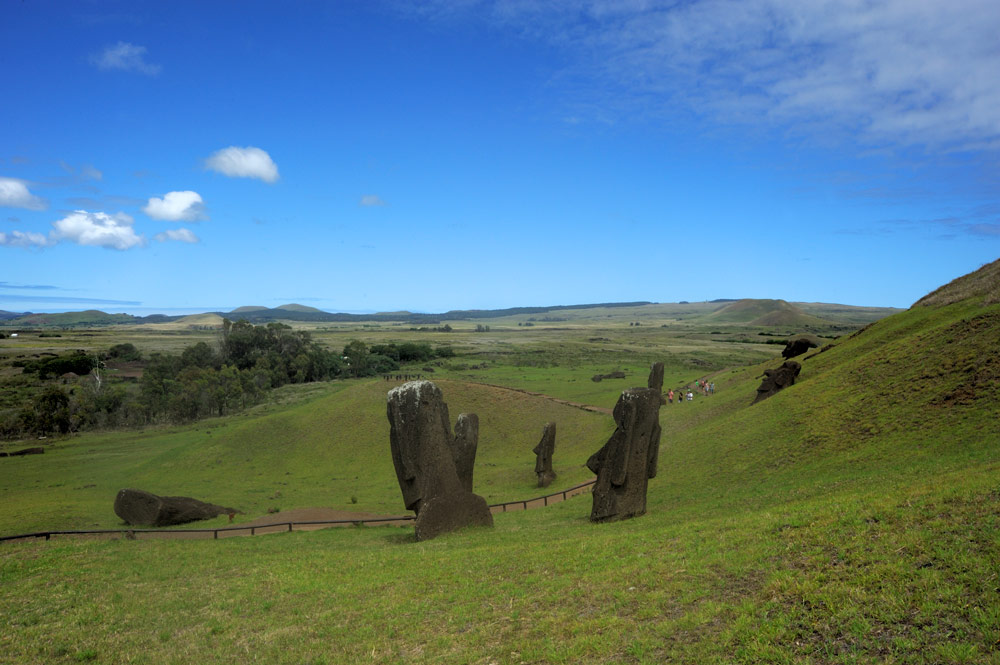
The size of statues vary significantly and gigantomania developed in the long run. The islanders started their art production from 2-3 meters moai, but later they increased the size up to 12 meters (highest moai that was set on the ahu). The last unfinished statue is about 20 meters.
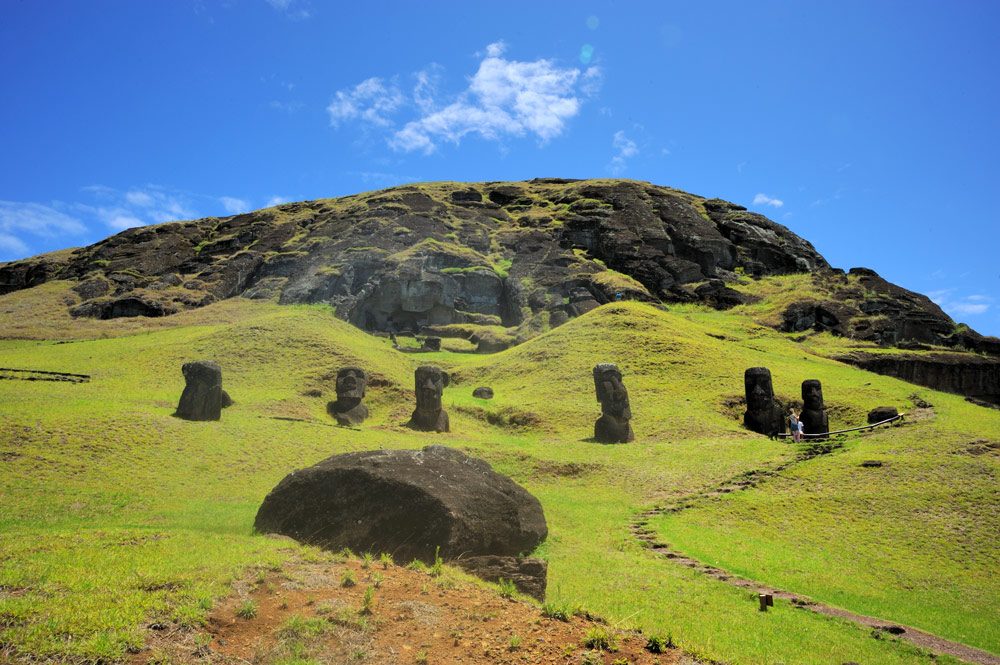
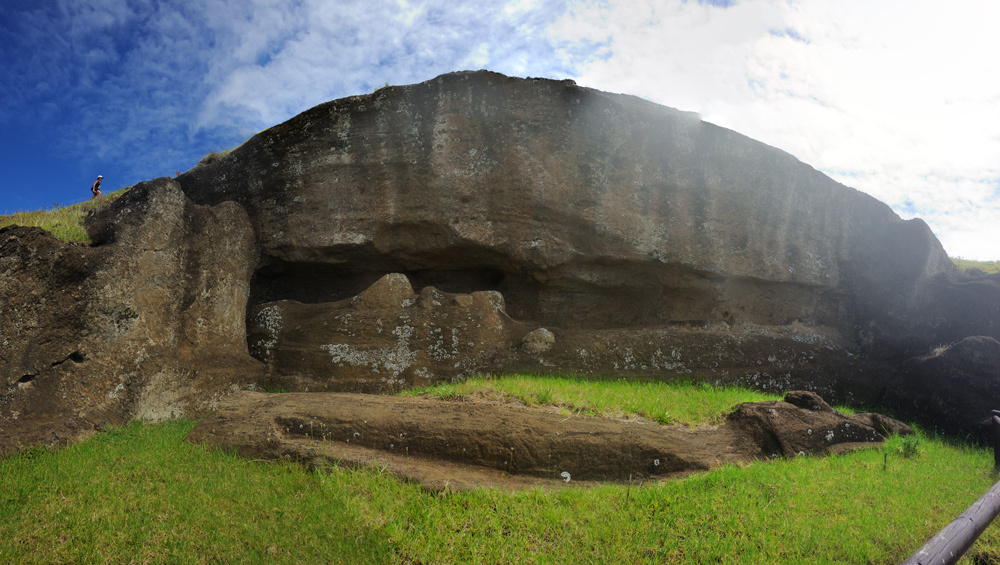
Moai were carved with stone chippers. When the chipper become blunt, the sculptor just dropped it on the ground and took a new one. The whole volcano slope is covered with used chippers.
It was difficult to believe that such huge statues from hard rock and in such amount were made with just other stones. Creation of moai (and their transportation) was attributed to anybody (including aliens) except the real islanders. However, Heyerdahl in his experiments shown that well-motivated islander with plenty of time can carve anything, not only 20-meters stone statue.
Actually, what are all these statues and what is the purpose of their making? To the moment when Europeans found the Eastern Island and started to pay interest to its culture, the cult connected with moai was already replaced by another one. Old gods are quickly replaced with other ones in human memory, so all information about moai came only from old legends. Mostly reliable variant for now – they are postmortem statues of different important people – chiefs, great warriors and other persons of huge inner strength. This inner strength, mana, is a very useful thing. Mana can be transferred from a dead person to his statue. Mana concentrated in statue can help to heirs and tribesmen of a dead person.
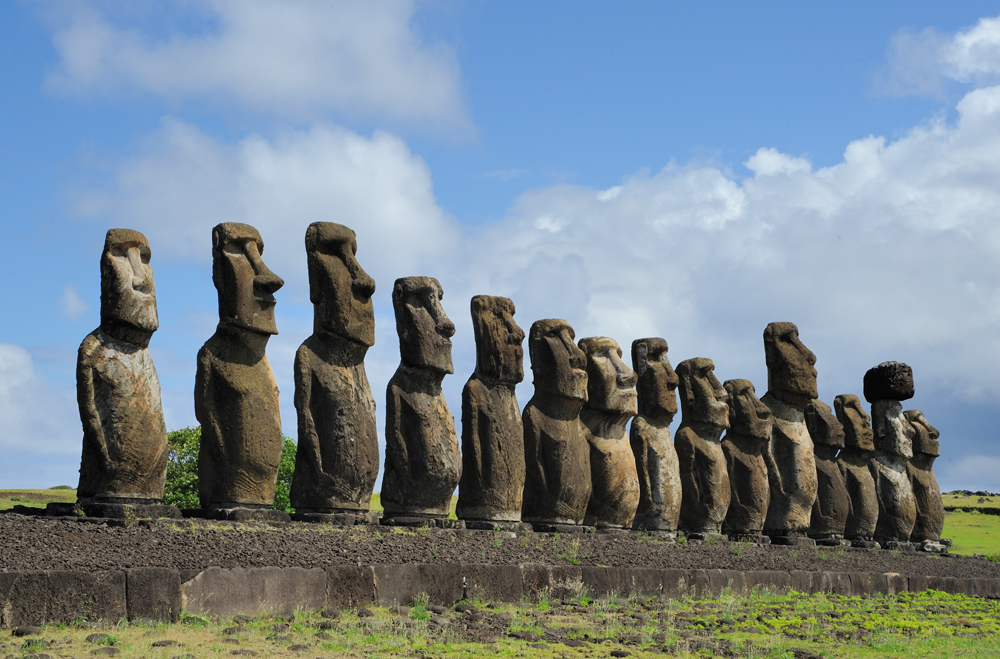
Moai have individual faces not only because it is very difficult to make two identical objects just with wild stone, but also because they are portraits of real people.
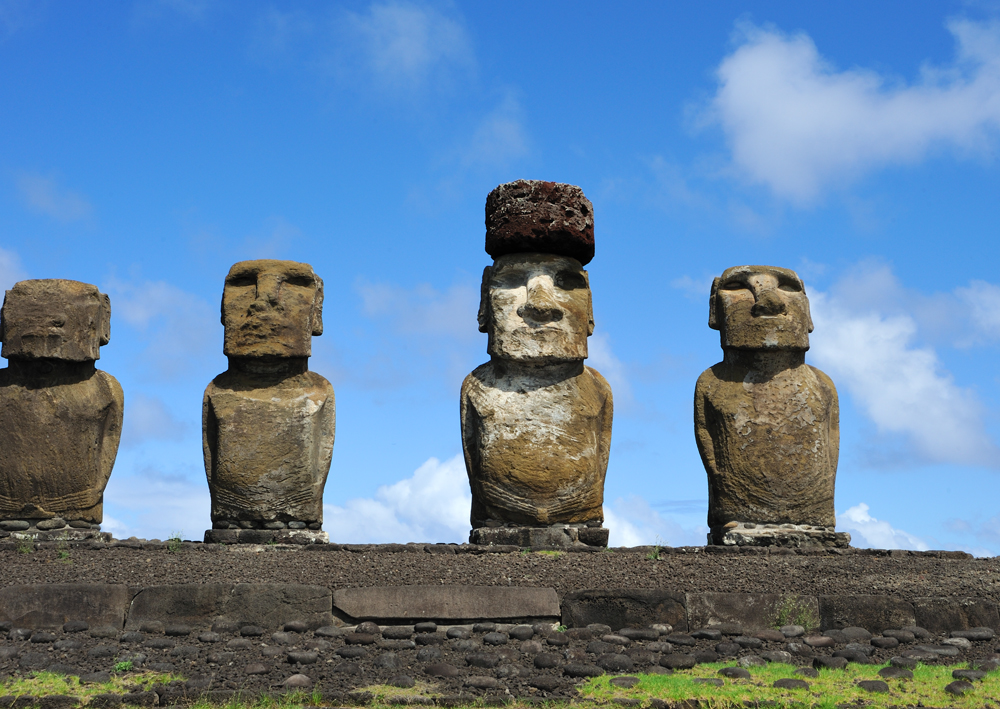
However, they are quite unified. Mostly they are shown standing hip-cut person with hands on the tender bits.
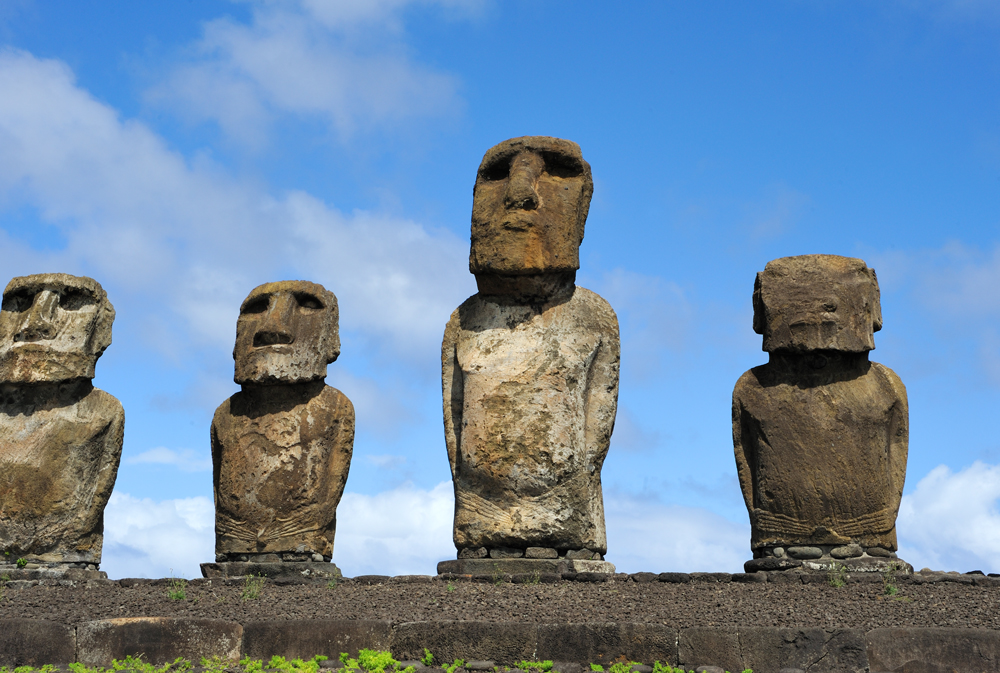

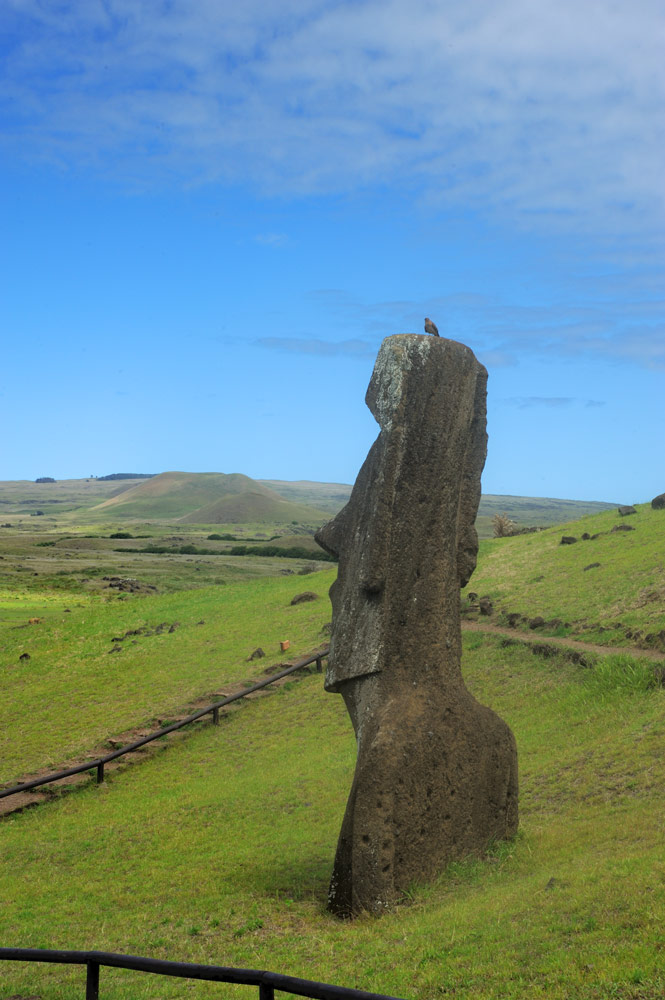
Of course, some modification appeared from time to time, but nothing dramatic. For example, drawing of loincloth can be found on some moai.
Moai from Anakena with the loincloths.


One dramatic exception is a kneeled moai with full-length legs. This guy even has a beard while all others are clean-faced.
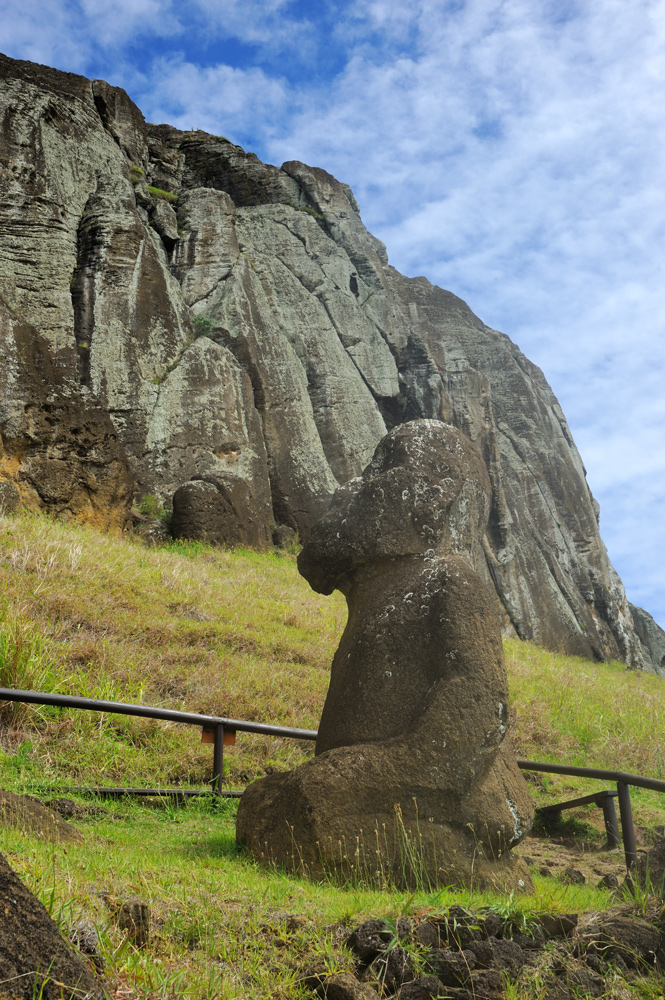
Pay attention to the ears. Laps are very long, stretched almost to the shoulders. Of course, such body modification can be found in many cultures, just remember Buddha, or simply look around in any public place. However, for the islanders, long ears were the privilege of the ruling clan.
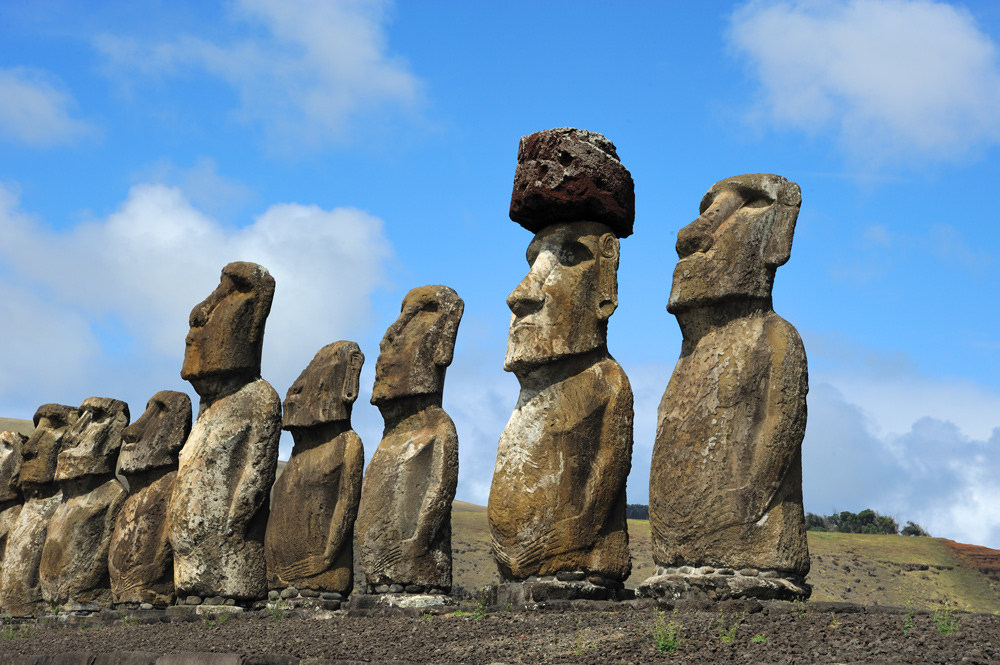

On the most Polynesian islands traditional society divided into two groups – ruling “nobility” and vassal “folk”. In this context, Eastern Island was not different. Traditionally the name of the ruling clan was translated as “long-eared”, the vassal’s name – “short-eared”. Now scientists say that more correct translation is “thin” and “full” correspondingly. Long-eared rulers collected their mana in giant moai, short-eared peasants grew yams and caught fish.
By the way, about more practical than mana collection usage of stones. Somewhere on the island plans grew n such stone holes for protection from wind and collection of rainwater (it is a reconstruction on the photo).

To be helpful moai should stand near the village and radiate mana directly to people, so they were transported from the pit to the villages. In most cases moai stand with their backs to the sea, between sea and a village.
It was a lot of discussions about how ancient islanders moved gigantic stone statues with bare hand thought the whole island. The islanders even said that moai moved themself using mana. However, Heyerdahl in his experiments shown that group of islander can transport the statue without a significant problem and set it in a vertical position in the required place.
Actually, this is the moai that was erected during the Heyerdahl experiment.

It locates in Anakena.
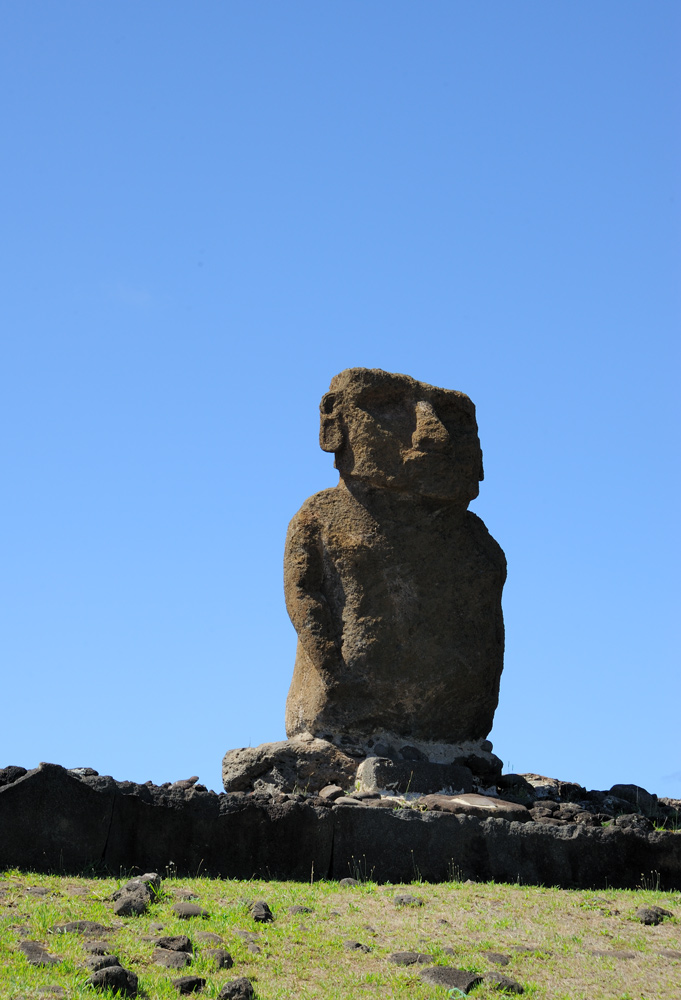
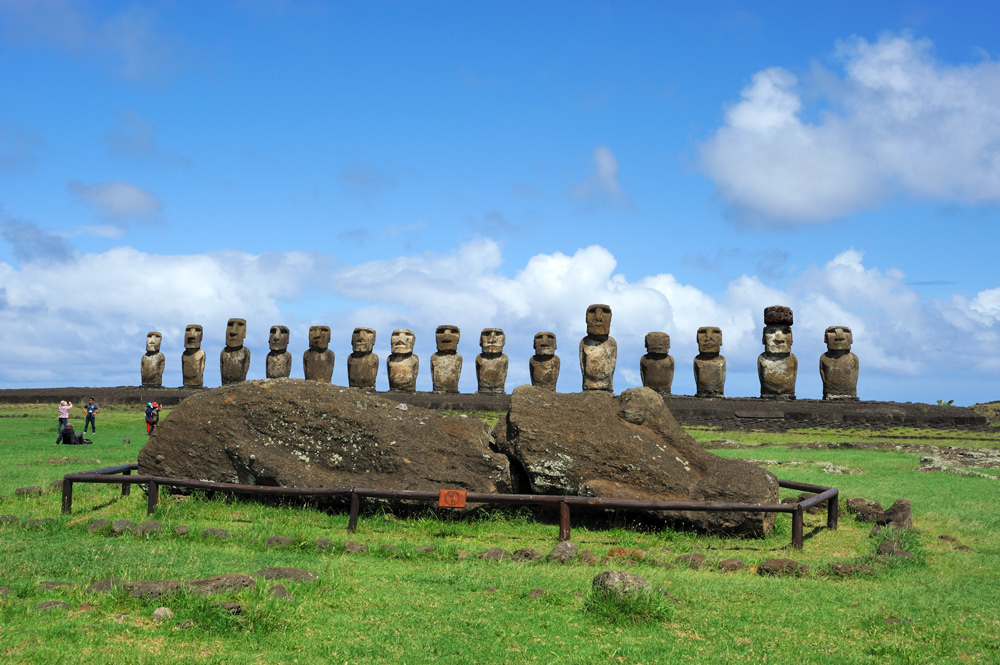
Moai also have pukao. Early it was believed that pukao is a head-dress, but now the idea that they are hairdo is more popular. Hairdos of similar shape were worn by Polynesian warriors. If most moai were made from grey Rano Raraku tuff, pukao were made from red tuff of Puna Pao, the volcano on another part of the island.
Puna Pao
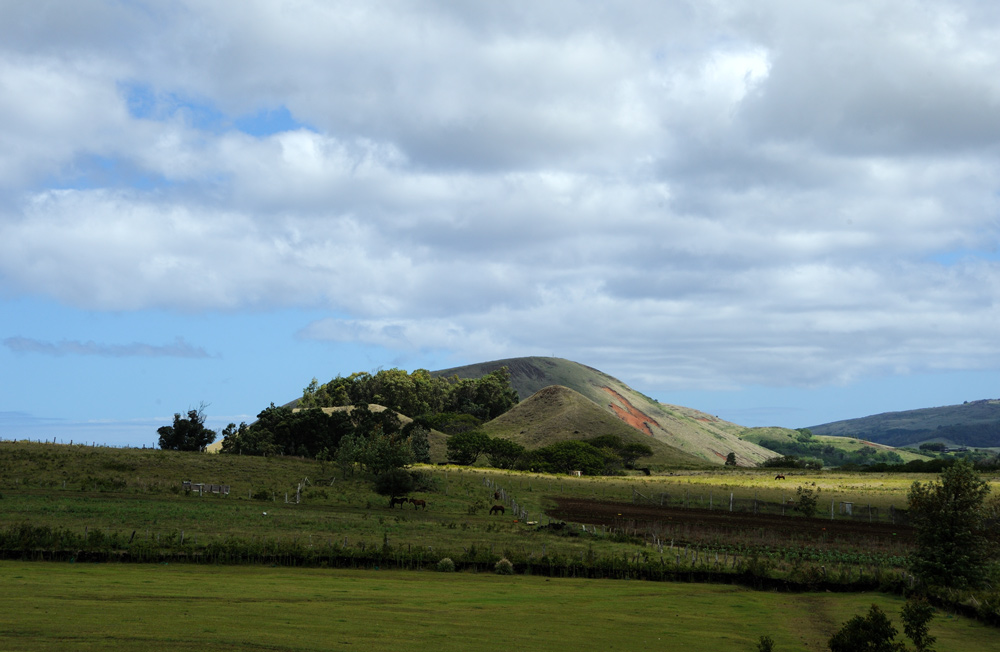

Unused pukao are everywhere.
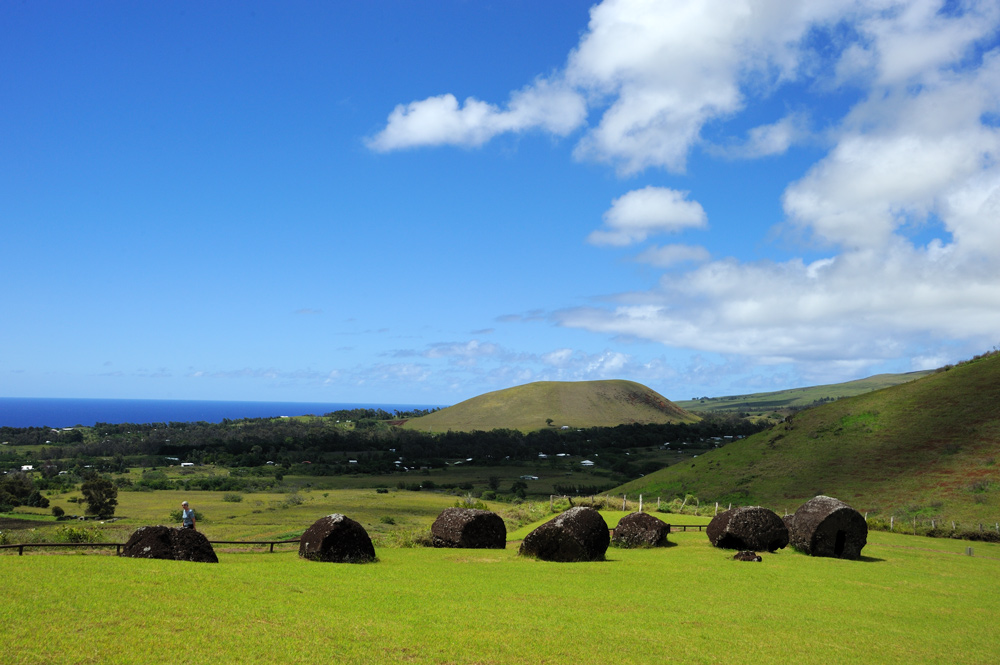
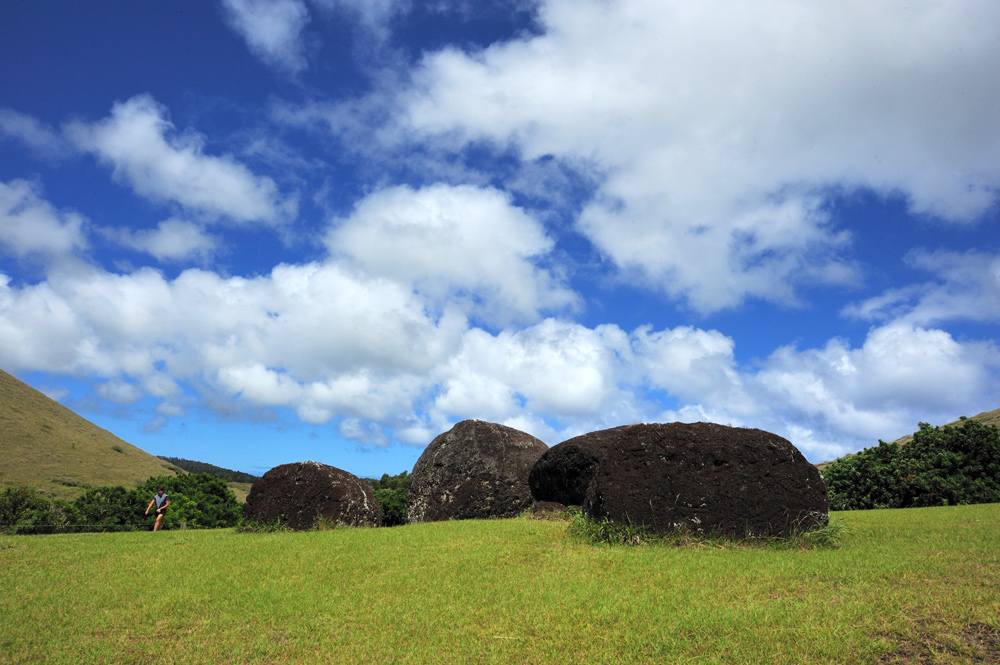
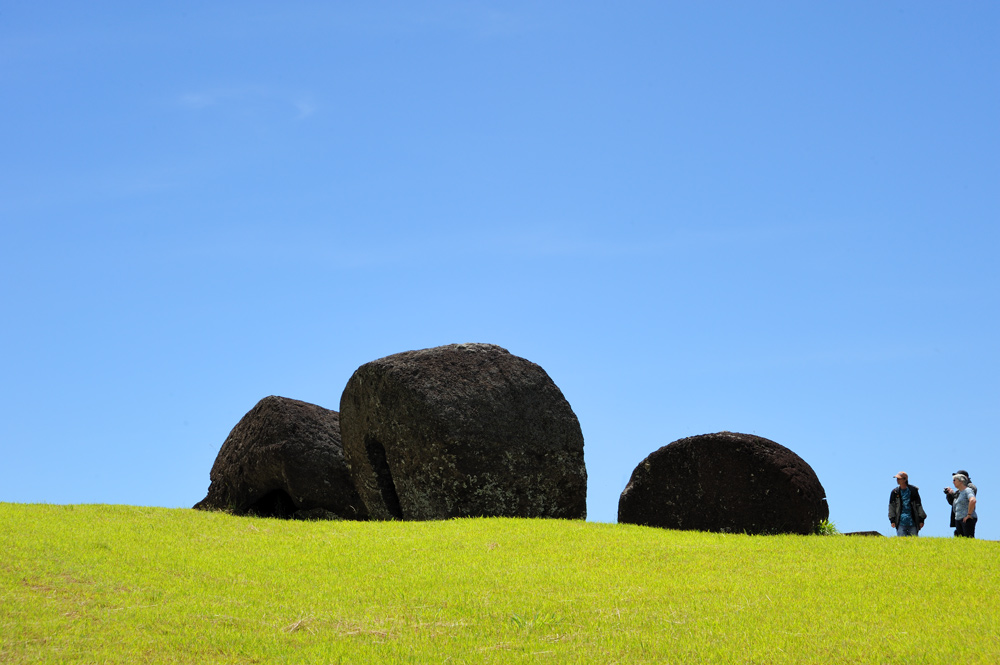
Finished pukao were transported to mounted moai and set up on his head. The amount of found pukao is significantly lesser than the amount of found moai. Either the islanders didn’t have time to make them, or not all moai were supposed to have them. Or many of important persons were bald.
Only one pukao of Tangariki moai was returned to its place at the reconstruction. The rest were left on the ground.

Apart from pukao moai had eyes. They were made from white coral and obsidian after moai erection.
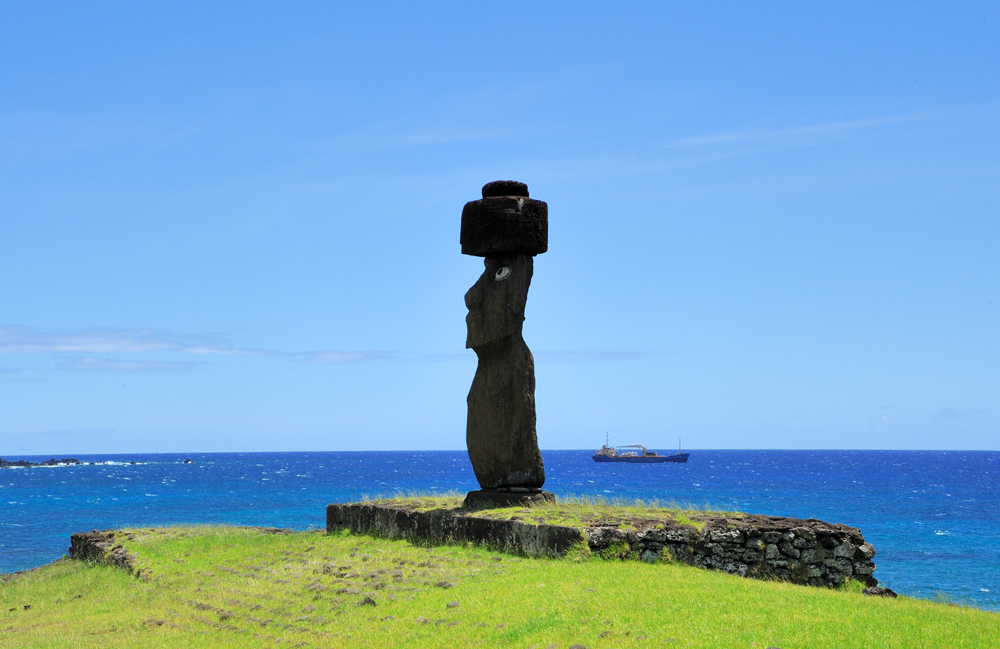

A proper place for moai is a ceremonial platform Ahy. About them in the next part.